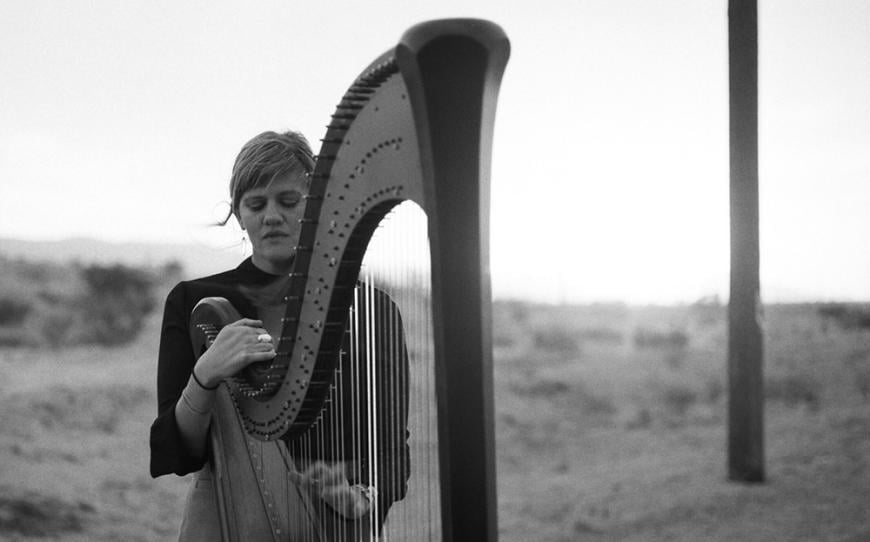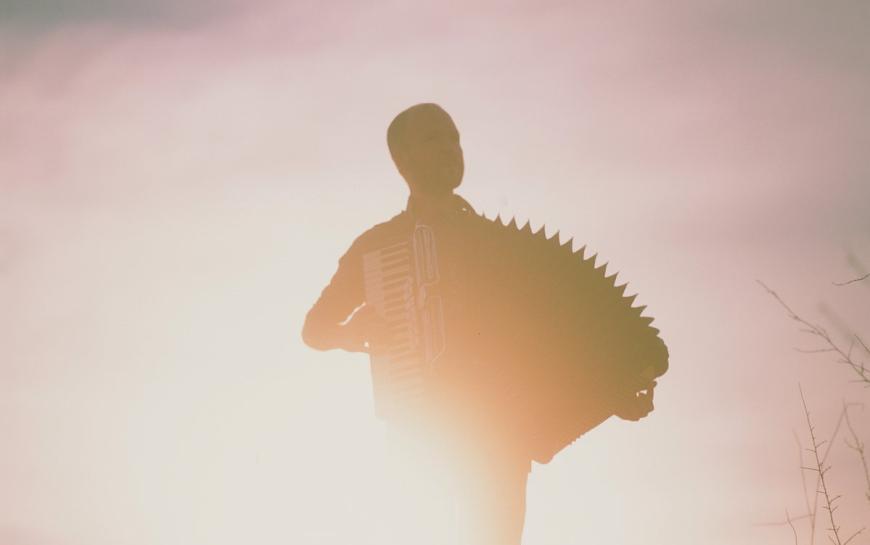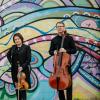
In some dystopian/utopian future scored to an experimental-ambient soundtrack, harpist Mary Lattimore has a commune of artist friends in a bucolic environment who make music that feels like sweaters because they don’t have sweaters, that is warm like food because they don’t have food, and that doesn’t last very long but they had a beautiful and emotionally cathartic time doing it. I saw the first act of that future on Sunday evening, Jan. 8 at Los Angeles’s home of eclectic acts, Zebulon.
Lattimore, whose clouds of rolled chords and sweet dreams are produced by harp and electronic effects, has put together a series of concerts at the cafe venue featuring herself and a gaggle of collaborators, with Sunday night’s show the first of the four. She even brought in a surprise guest, pop crooner Perfume Genius (Mike Hadreas), to sing a warbling rendition of Townes Van Zandt’s “Don’t Take It Too Bad,” replacing saccharine country guitar with saccharine stately harp.
Lattimore’s list of collaborators is long, including Sonic Youth’s Thurston Moore and indie-rock staple Kurt Vile, though Sunday’s guests brought us more to the realm of the bower than the headbanger. Joining her were experimental-ambient artists accordionist Walt McClements and guitarist Paul Sukeena, with whom Lattimore has toured and collaborated on projects such as the album West Kensington and the track “A Hole in the Fence.”
McClements opened the night with a solo set backdropped by a silent screening of the end of the classic Hollywood tragedy Sunset Boulevard. He is endearingly awkward between songs, especially compared to Lattimore, who is generous and candid in her storytelling. After rounding off a piece that chugged along like a Philip Glass score, McClements, pulling his baseball cap down like he was trying to fold into his accordion, said, “Now back to some long notes,” which are the main tools of his wizardry.
It was a night for gentle swaying. McClements built vaulting waves of pitches over oscillating bass lines, echoing well with the sense of dark inevitability in Sunset Boulevard. At the highest point of these towers of layers, unrefined like deep industrial sounds rich in overtones, the music enveloped us in an awesome release. When McClements joined Lattimore and Sukeena’s world at the end of the show, shadows were painted into an effervescent watercolor.

Like the crayons featured in her shows’ posters, Lattimore’s music possesses a childlike lightness that owes to her casual, improvisatory style. The third song of her set was off her album Hundreds of Days, titled “On the Day You Saw the Dead Whale.” She explained that she had written it while at a retreat in the redwoods north of San Francisco and on a day when she indeed saw a dead whale that had beached near her cabin. She found it sad, she said, but if the music is any indication, it was also perhaps a catalyst to a sweeter rumination on life. Like in the second song of her set, she first laid down a basic, slow, and mostly major-chord progression and then began to improvise sweet, small melodies and arpeggiated chords over that loop.
It became interesting when she introduced the alien sound of reverse looping. A common refrain harpists hear is that being beautiful on its own isn’t enough; solo harp playing is for background music at weddings, or so the stereotype goes. And at times, I found myself fighting the feeling that the music was too simple here.
“For Scott Kelly, Returned to Earth” brought me past that fight. Written for astronaut Scott Kelly and imagining the strangeness of his return to quotidian life on Earth, the song had Lattimore working the delay pedal expertly, thickening and thinning the rain of notes, letting some moments bleed painfully and some float with a warm updraft of curiosity.
So before an eventual societal collapse makes visiting Lattimore’s doomed dreamy commune of artists impossible, there’s still time for a trip.


